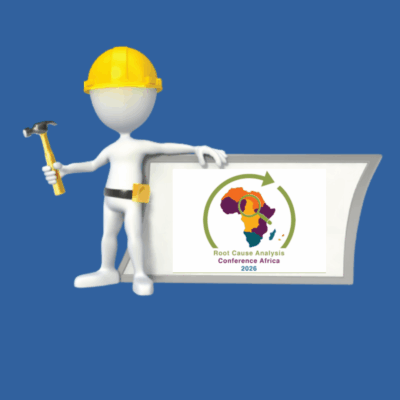In the digital age, data has become a critical asset in various industries, including construction. Leveraging data effectively can significantly enhance the success of construction projects by improving decision-making, increasing efficiency, and reducing costs. In South Africa, where the construction industry is a vital part of the economy, harnessing the power of data can lead to more successful project outcomes and a competitive edge in the market. This blog explores the importance of data in construction, the types of data that can be utilized, and strategies for leveraging data to ensure project success in the South African context.
The Importance of Data in Construction
- Enhanced Decision-Making Data provides insights that inform better decision-making throughout the construction project lifecycle. From planning and design to execution and maintenance, data-driven decisions can lead to more efficient and effective project outcomes.
- Improved Efficiency By analyzing data, construction companies can identify inefficiencies and areas for improvement. This leads to optimized processes, reduced waste, and faster project completion times.
- Cost Reduction Data helps in accurately estimating costs, tracking expenses, and identifying cost-saving opportunities. This ensures projects stay within budget and resources are allocated efficiently.
- Risk Management Data allows for better risk identification and management. By analyzing historical data and current project metrics, companies can anticipate potential issues and mitigate risks before they escalate.
- Quality Assurance Data-driven quality control ensures that construction standards are met consistently. Monitoring data in real-time allows for quick identification and correction of deviations from quality standards.
Types of Data Utilized in Construction
- Project Data This includes information related to project scope, timelines, budgets, and milestones. Project data helps in planning, monitoring progress, and ensuring project goals are met.
- Operational Data Operational data encompasses daily activities, resource utilization, equipment usage, and workforce productivity. This data is crucial for optimizing operations and improving efficiency.
- Financial Data Financial data includes cost estimates, budgets, actual expenditures, and financial performance metrics. It helps in managing project finances and ensuring cost control.
- Safety Data Safety data involves records of incidents, safety inspections, compliance reports, and risk assessments. This data is essential for maintaining a safe working environment and adhering to safety regulations.
- Quality Data Quality data includes inspection reports, material quality records, and compliance with construction standards. It ensures that the project meets the required quality benchmarks.
- Environmental Data Environmental data involves information on energy usage, waste management, and environmental impact assessments. This data helps in implementing sustainable construction practices.
Strategies for Leveraging Data in Construction
- Implementing a Data-Driven Culture Cultivating a data-driven culture within the organization is the first step towards leveraging data effectively. This involves encouraging data literacy, promoting data sharing, and integrating data into decision-making processes.
Steps to Implement a Data-Driven Culture:
- Training and Education: Provide training programs to enhance data literacy among employees.
- Data Accessibility: Ensure that data is easily accessible to all relevant stakeholders.
- Leadership Support: Secure commitment from leadership to promote and support data-driven initiatives.
- Utilizing Advanced Data Analytics Advanced data analytics tools and techniques can transform raw data into actionable insights. These tools help in predicting trends, identifying patterns, and making informed decisions.
Analytics Techniques:
- Predictive Analytics: Use historical data to predict future trends and outcomes.
- Descriptive Analytics: Analyze past data to understand what has happened.
- Prescriptive Analytics: Provide recommendations based on data analysis to optimize decision-making.
- Implementing Building Information Modeling (BIM) BIM is a digital representation of the physical and functional characteristics of a building. It integrates data from various sources and provides a comprehensive view of the project, facilitating better planning and management.
Benefits of BIM:
- Improved Collaboration: Enables better collaboration among project stakeholders.
- Enhanced Visualization: Provides detailed 3D models for better visualization and planning.
- Data Integration: Integrates data from different sources for a unified view of the project.
- Leveraging IoT and Smart Sensors Internet of Things (IoT) devices and smart sensors collect real-time data from construction sites. This data can be used to monitor site conditions, track equipment usage, and ensure safety compliance.
Applications of IoT in Construction:
- Equipment Monitoring: Track the usage and condition of construction equipment.
- Safety Monitoring: Monitor site conditions to ensure safety compliance.
- Resource Management: Optimize resource utilization based on real-time data.
- Implementing Construction Management Software Construction management software provides a centralized platform for managing project data, schedules, budgets, and communication. It enhances project coordination and improves efficiency.
Features of Construction Management Software:
- Project Tracking: Monitor project progress and milestones.
- Budget Management: Track expenses and manage budgets.
- Communication Tools: Facilitate communication among project stakeholders.
- Ensuring Data Quality and Accuracy Ensuring the quality and accuracy of data is crucial for making informed decisions. Implementing data validation and cleansing processes helps in maintaining data integrity.
Data Quality Best Practices:
- Data Validation: Implement validation checks to ensure data accuracy.
- Data Cleansing: Regularly clean data to remove inaccuracies and inconsistencies.
- Standardization: Standardize data formats and definitions for consistency.
- Real-Time Data Monitoring and Reporting Real-time data monitoring and reporting enable proactive decision-making and quick response to issues. Dashboards and reporting tools provide real-time insights into project performance.
Real-Time Monitoring Tools:
- Dashboards: Use dashboards to visualize real-time data and track key performance indicators (KPIs).
- Alerts and Notifications: Set up alerts and notifications for critical events and thresholds.
- Reporting Tools: Generate real-time reports to monitor project performance.
- Integrating Data Across Systems Integrating data from various systems ensures a comprehensive view of the project. This involves connecting data from project management, financial, and operational systems.
Data Integration Techniques:
- APIs: Use APIs to connect different systems and facilitate data exchange.
- Data Warehousing: Implement data warehousing solutions to consolidate data from multiple sources.
- Integration Platforms: Use integration platforms to streamline data integration processes.
Case Studies of Data-Driven Construction Projects in South Africa
1. The Leonardo, Johannesburg
Overview: The Leonardo, one of Africa’s tallest buildings, used data-driven strategies to ensure successful project completion.
Data Utilization:
- BIM Implementation: Used BIM for project planning, coordination, and visualization.
- Real-Time Monitoring: Implemented real-time monitoring of construction activities and site conditions.
- Cost Management: Leveraged data analytics for accurate cost estimation and budget management.
2. Kusile Power Station
Overview: Kusile Power Station is one of South Africa’s largest infrastructure projects, utilizing data to manage its complexity.
Data Utilization:
- Advanced Analytics: Used predictive analytics to anticipate project challenges and mitigate risks.
- IoT Integration: Implemented IoT sensors for monitoring equipment and site conditions.
- Safety Data: Collected and analyzed safety data to ensure compliance and reduce incidents.
3. Menlyn Maine, Pretoria
Overview: Menlyn Maine, Africa’s first green city, employed data-driven strategies to achieve sustainability and efficiency.
Data Utilization:
- Sustainability Data: Used environmental data to implement sustainable construction practices.
- Energy Management: Leveraged data analytics to optimize energy usage and reduce consumption.
- Smart Technology: Integrated smart building technologies for enhanced operational efficiency.
Challenges in Leveraging Data in Construction
- Data Silos Data silos occur when data is isolated within different departments or systems, making it difficult to access and integrate. Breaking down data silos is essential for comprehensive data analysis.
- Data Security and Privacy Ensuring data security and privacy is crucial, especially when dealing with sensitive project information. Implementing robust security measures and compliance with data protection regulations is necessary.
- Lack of Standardization Inconsistent data formats and definitions can hinder data integration and analysis. Standardizing data across the organization is vital for accurate and reliable insights.
- Technical Expertise Leveraging data effectively requires technical expertise in data analytics, BIM, IoT, and other technologies. Investing in training and development is essential to build this expertise.
- High Initial Costs Implementing advanced data analytics tools and technologies can be costly. However, the long-term benefits often outweigh the initial investment.
Future Trends in Data-Driven Construction
- AI and Machine Learning AI and machine learning will play a significant role in analyzing large datasets, predicting trends, and optimizing construction processes.
- Blockchain Technology Blockchain can enhance data security, transparency, and trust in construction projects. It provides a decentralized and immutable ledger for tracking project transactions and data.
- Digital Twins Digital twins create a virtual replica of the physical building, allowing for real-time monitoring and simulation of various scenarios to optimize performance and maintenance.
- Augmented Reality (AR) AR technology can overlay digital information onto the physical world, providing real-time insights and enhancing project visualization and collaboration.
- Big Data Analytics The use of big data analytics will expand, enabling construction companies to analyze vast amounts of data from various sources for deeper insights and better decision-making.
Conclusion
Leveraging data effectively is crucial for the success of construction projects in South Africa. By implementing data-driven strategies, construction companies can enhance decision-making, improve efficiency, reduce costs, and ensure project quality. The use of advanced data analytics, BIM, IoT, and construction management software provides valuable insights that drive project success. Despite challenges such as data silos, security concerns, and high initial costs, the benefits of a data-driven approach far outweigh these obstacles. Future trends such as AI, blockchain, digital twins, AR, and big data analytics will further transform the construction industry, providing new opportunities for innovation and growth. By embracing these trends and implementing best practices, construction professionals in South Africa can achieve successful project outcomes and gain a competitive edge in the market.
About Victor Terblanche
- Web |
- More Posts(28)







Leave a Reply